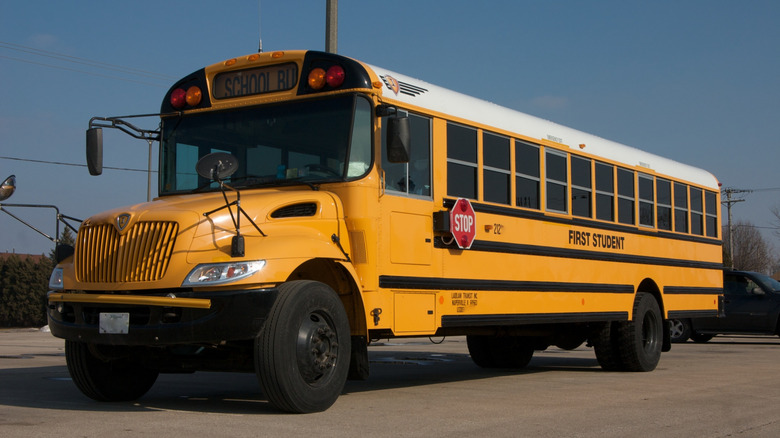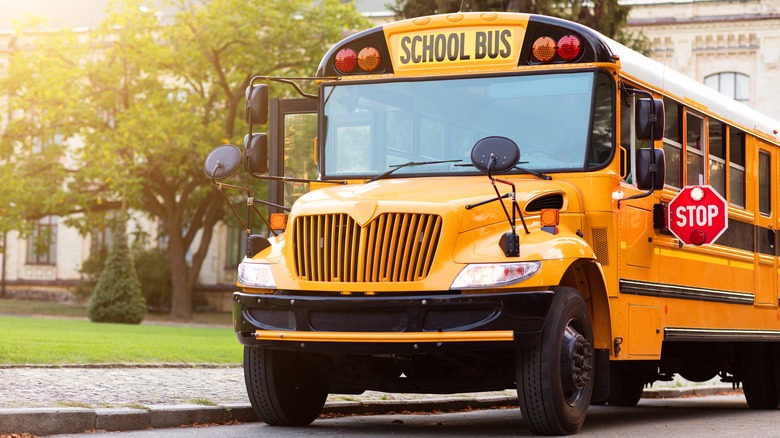What Is The White Flashing Light On Top Of School Buses For?
Over our school careers, millions of us became super familiar with the iconic bright yellow school bus. We'd dread the sound of its approach as we feverishly finished the previous night's homework, and we knew exactly where our friends would be sitting as we boarded. There's one thing, however, that we may not have known: the purpose of that white flashing strobe light on top of some school buses.
If you're still wondering, the answer is simple. It's all about safety, helping ensure that the bus is visible to fellow motorists regardless of potentially inclement weather conditions. Steve Montiero, an Orlando, Florida traffic anchor lovingly known as Trooper Steve, said in an "Ask Trooper Steve" segment on WKMG News 6 that because school buses' roofs are higher than cars' roofs, "halogen lights, those slow flashing lights, aren't always visible. So you put a white strobe up there. This is helpful in those early morning hours," when lingering fog and mist can be a particular problem for drivers.
Montiero was speaking specifically about the Sunshine State, noting that "this has been actually on school buses in Florida since like 1983." That's not to say, though, that other states' school buses don't have them as well (along with other safety precautions, such as stopping at every railroad crossing).
White flashing lights on school buses and the law
There's no U.S. federal law requiring school buses to sport white strobe lights, so states have their own regulations and guidance. Title 46.2 of the Code of Virginia, for instance, states that "school buses may be equipped with flashing white or amber warning lights of types authorized by the Board of Education after consultation with the Superintendent of State Police." With that established and the lights authorized, they "shall be lighted while the bus is transporting school children during periods of reduced visibility caused by atmospheric conditions other than darkness." The code doesn't say whether these are the only periods during which they can be illuminated.
Meanwhile, in Alaska, 2017 saw the introduction of the revised Minimum Standards For Alaska School Buses. It's specific about the position of a roof-mounted strobe light, stating that it has to be at least 4 feet from the back of the bus and must be illuminated while schoolchildren are aboard.
The Hawkeye State is again different, with Section 321.373 of the 2016 Iowa code noting that all new school buses that began service later than January 1977 need to boast a white flashing strobe light on their roof. These lights aren't required to be on in every scenario; they're employed as an extra safety measure "to afford optimum visibility during periods of inclement weather." Though school buses don't have seat belts, this lighting is an example of a protective tactic they often employ.

